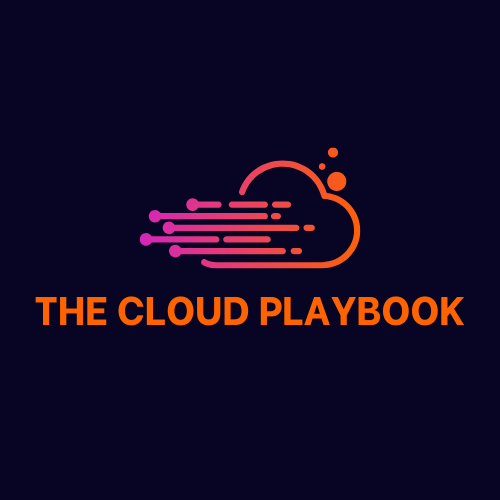TCP #21: Do you want to deploy features in production without fear?
This guide will walk you through how Feature flags can ensure smoother deployments.
You can also read my newsletters from the Substack mobile app and be notified when a new issue is available.
Have you run into software update issues that have broken the system?
Users complain. Your team scrambles.
It’s a nightmare. And if it keeps happening, your reliability and reputation suffer.
What if you could release new features without fear? Gradually roll them out, catch issues early, and switch them off if things go wrong.
Instead, ensure smooth deployments and happy users.
In today’s newsletter edition, I will teach you everything you need to know about feature flags, whether you're new to them or looking to optimize their use in your deployment process.

But before we begin, do you want to understand how writing can unlock massive opportunities and help you grow professionally?
Then, I have something special for you today.
The Ultimate Guide To Start Writing Online by Ship 30 for 30.
Nicolas Cole and Dickie Bush, the creators of Ship 30 for 30, put this 20,000-word helpful guide to explain the frameworks, techniques, and tools to generate endless ideas, build a massive online audience, and help you get started. They give it all away for FREE!
You can download it here.
I would love to know if this excites you to start writing online.
P.S. This guide encouraged me to sign up for their writing course. :)

Ok, now back to the newsletter edition for this week.
What Are Feature Flags?
Feature flags, or feature toggles, allow you to turn features on or off in your software without deploying new code.
They allow you to roll out new features to a subset of users, conduct A/B testing, and quickly turn off features if something goes wrong.
Decoupling feature deployment from code releases allows you to release more frequently and with less risk.
Why Use Feature Flags?
Using feature flags offers several advantages. They provide a safety net for new features, allowing you to test in production without impacting all users.
For example, if you release a new payment gateway, you can enable it for a small percentage of users. This way, you catch issues early and minimize disruption.
Feature flags also facilitate continuous delivery, making deploying smaller, incremental changes easier than big, risky releases.
Setting Up Feature Flags
To get started with feature flags, you need a feature flagging system.
Various tools are available, such as LaunchDarkly, FeatureToggle, AWS AppConfig, and even simple configuration files or databases. Choose one that fits your team's needs and integrates well with your tech stack.
Once you have a system, the next step is to implement the flags in your code. Typically, this involves wrapping new features or changes in conditional statements that check the status of the feature flag.
Implementing Feature Flags in Your Code
Here's what to do next: wrap your new feature in a feature flag check.
This might look like an if statement that checks whether the feature is enabled in your code.
For instance, in a JavaScript application, you might write:
if (featureFlags.newFeature) {
// Code for the new feature
} else {
// Code for the existing feature
}
This way, you can deploy your code with the new feature turned off and gradually enable it for users.
Gradual Rollout and A/B Testing
Feature flags stand out when it comes to gradual rollouts and A/B testing.
Gradual rollouts allow you to enable a feature for a small percentage of users and increase the percentage over time as confidence grows.
For A/B testing, feature flags can help you serve different versions of a feature to various user groups, allowing you to gather data on which version performs better.
This data-driven approach ensures that you make informed decisions about which features to keep and which to modify or discard.
Managing Feature Flags
Effective management of feature flags is crucial. More active flags can make your codebase manageable and easier to maintain.
Establish a process for tracking and removing outdated flags. Regularly review active flags and clean up those that are no longer needed.
Tools like LaunchDarkly offer dashboards to help manage your flags, making it easier to see which flags are active and their current state.
Handling Rollbacks
One key benefit of feature flags is the ability to quickly disable a feature if something goes wrong.
If you notice a new feature causing issues in production, you can turn off the feature flag, effectively rolling back the change without redeploying your code.
This rapid response minimizes downtime and user disruption, allowing your team to fix issues more calmly and effectively.
Integrating with CI/CD Pipelines
Feature flags integrate seamlessly with continuous integration and deployment (CI/CD) pipelines.
By incorporating flags into your CI/CD process, you can automate the rollout and rollback of features.
For example, you can use scripts to turn feature flags on or off based on the success of automated tests.
This integration ensures that your feature flag strategy complements your overall deployment process, providing a robust framework for continuous delivery.
Monitoring and Analytics
Monitoring and analytics are critical when using feature flags. Track the performance and usage of features controlled by flags.
Tools like DataDog or New Relic can help you monitor the impact of new features on system performance.
Analyzing user feedback and behavior provides insights into how well a feature is received and whether it meets user needs.
This data-driven approach allows you to refine features and improve overall user experience.
Best Practices for Feature Flagging
To get the most out of feature flags, follow these best practices:
Start Small: Begin with key features to avoid overwhelming your team.
Document Flags: Document each flag's purpose and usage.
Clean Up Regularly: Remove obsolete flags to keep your codebase clean.
Test Thoroughly: Use flags in your testing environments to mimic production scenarios.
Communicate: Ensure all team members understand how to effectively use and manage feature flags.
Final Thoughts
Feature flags are a game-changer for deployment, enabling you to release features confidently and efficiently.
By integrating feature flags into your deployment strategy, you can achieve greater flexibility, faster releases, and improved user satisfaction. Ready to take control of your deployments? Start implementing feature flags today and experience the benefits firsthand.
With these steps, you're well on mastering feature flags for deployment.
Happy flagging!
Don't forget to follow me on X/Twitter and LinkedIn for daily insights.
That’s it for today!
Did you enjoy this newsletter issue?
Share with your friends, colleagues, and your favorite social media platform.
Until next week — Amrut
Posts that caught my eye this week
What are the main API Architecture Styles? by Dr Milan Milanović
Latest Innovations in Recommendation Systems with LLMs by The ML Engineer Insights
Emulating real dependencies in Integration Tests using Testcontainers by packagemain.tech
Event-Driven Architecture (EDA) is exciting until you deal with event versioning by System Design Classroom
Whenever you’re ready, there are 2 ways I can help you:
Are you thinking about getting certified as a Google Cloud Digital Leader?
Here’s a link to my Udemy course, which has helped 618+ students prepare and pass the exam. Currently, rated 4.24/5. (link)
Course Recommendation: AWS Courses by Adrian Cantrill (Certified + Job Ready):
ALL THE THINGS Bundle (I got this and highly recommend it!)
Get in touch
You can find me on LinkedIn or X.
If you wish to request a topic you would like to read, you can contact me directly via LinkedIn or X.



The ability to decuple release from deployment is underrated!
Thanks form mentioning my article on EDA, Amrut.